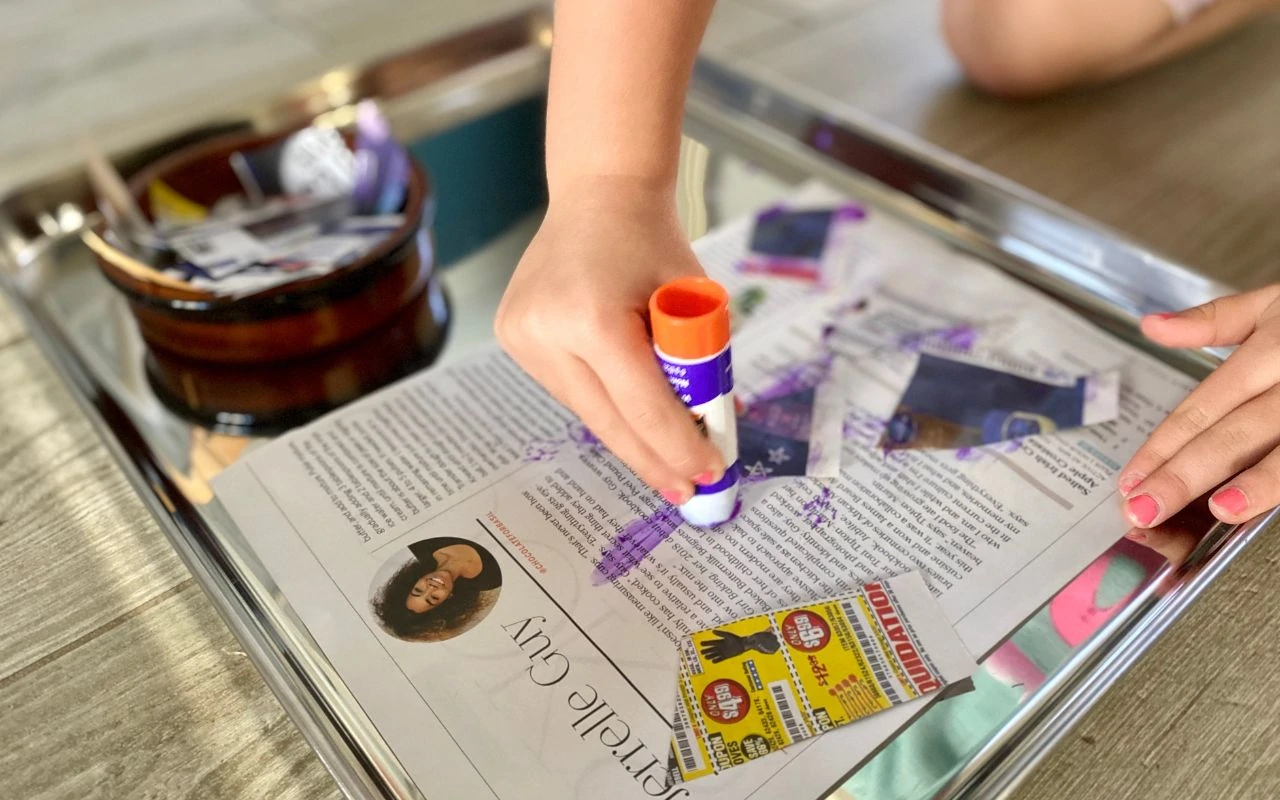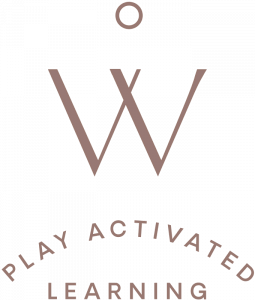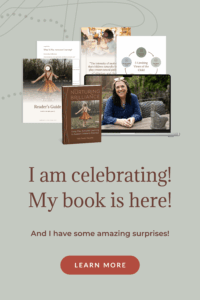Set up this Play Invitation so children can create beautiful collages, using advertising materials (brochures, postcards, and other colorful “junk mail” you might normally throw in the recycling bin) glued onto magazine pages.
It’s a simple and fun way to introduce children to different techniques such as tearing, cutting, and collaging, and an opportunity to explore concepts such as position, connection, contrast, or shape.
What Could Lead Us to This Play Invitation
- Children have been exploring the connecting and disconnecting urge;
- Children are curious about small and fragile objects;
- Children are excited about creating and assuming their authorship.
Materials Needed
- Advertising materials, such as brochures or postcard mailers, cut into pieces (Tip: invite children to tear the materials using either their hands or scissors, depending upon their age.)
- Magazines (Tip: check magazines beforehand to ensure they do not have shocking images.)
- Glue stick
- Optional: Assorted markers (Tip: choose markers that offer high contrast with the printed materials. POSCA Pens are great for this.)
Setting up this Play Invitation
- Prepare a table by wrapping it in paper, or set up a tray where children can work freely without worrying about damage.
- Place a magazine page over the table or tray, along with a glue stick and a bowl with the ad clippings. Keep all the materials at hand for the children. The bowl should be large enough for children to see and choose which clippings they want to use.
Tip 1: Have wooden sticks nearby to help children peel sticky paper off their fingertips.
Tip 2: Where to get magazines for collage? Ask families to bring old magazines and brochures so you can make a curated collection of interesting (and appropriate) materials. Other sources could be nearby businesses, colleagues, Craigslist, Library sales, and offset printing press businesses (ask for their waste paper either from the printing or cutting machines).
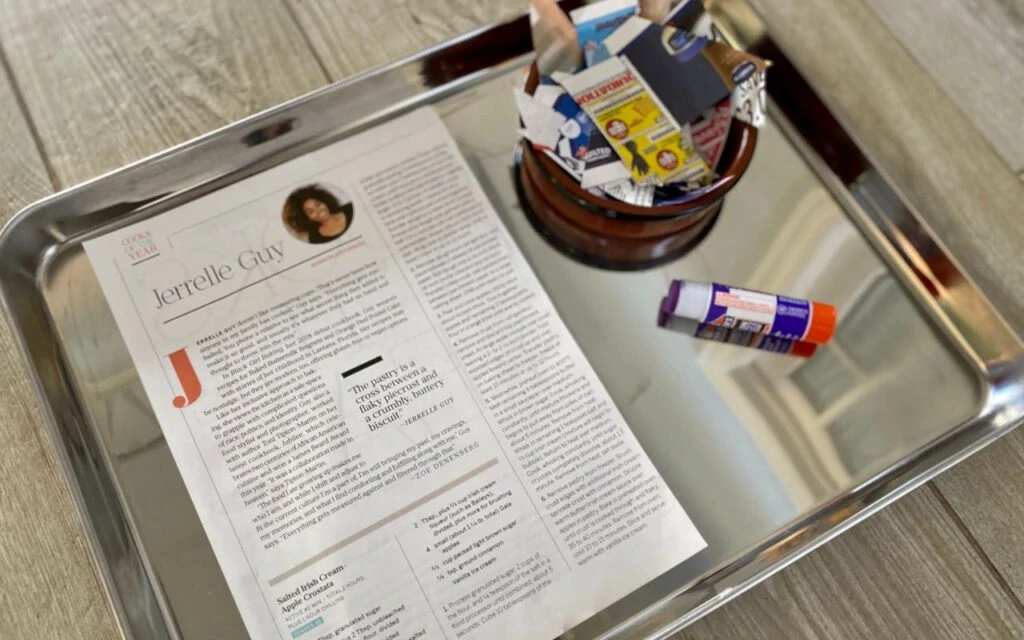
How to Create the Collage
- Offer several magazines, and invite children to choose a page to use as a base for the collage.
- Invite each child to choose the ad clippings they like best.
- Offer guidance on how to work with the glue stick; for example:
“We need to bring the glue up a bit by twisting one time around the bottom wheel. We don’t need to keep twisting! When we are done we twist it again in the opposite direction and put the cover back. Next, we put a bit of glue on the paper piece, not the magazine page. And you don’t need to put glue all over the piece of paper. Putting glue on 2 or 3 spots is enough.” - Let children create their compositions.
Optional Next Step: After the page is collaged with the ad clippings, offer markers so children can make further art markings on the collage.
How to Nurture the Natural Unfolding of the Child’s Identity During This Play Invitation
- Children have the right to understand how to use the materials. Take time to demonstrate proper use of your materials. Give children the chance to respect the materials alongside you. This can take time but it is worth it!
- Children also have the right to be successful using the materials. Offer a cleaning cloth if there’s too much glue on their fingers, or a wooden stick to pry the paper off sticky fingers.
- Children have the right to full self-expression in their art. Let go of expectations about the final result. Some children will glue several pieces of paper, while others will only glue one or two. Let children choose to create the way they want.
- Honor children’s work when talking about their creations. Focus on the colors, positions, shapes, and sizes of the pieces chosen for the collage.
The Academic Learning Opportunities
- MATH: Describe and compare measurable attributes (e.g., size, pattern) and shapes.
- LANGUAGE: Engage in exploratory and imaginative play with different materials, and elaborate on an imaginative idea.
- PHYSICAL: Build on their fine motor skills and visual-spatial relationships.
- SCIENCE: This is a great opportunity to talk with the children about texture and how the glue feels on their fingers. Is it hard or soft, gooey or sticky, warm or cold? These are all words you can use to increase children’s language development and science vocabulary.
Extensions
- Try other adhesive materials like tape and velcro.
- Play with contrasting colors and patterns by offering stamps to add to the collage.
Book Recommendation
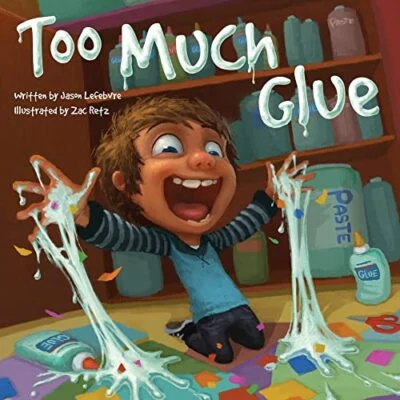
A book bout a boy who has an original approach to glue.
